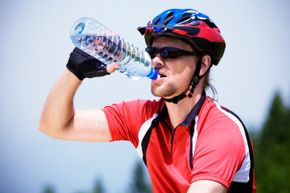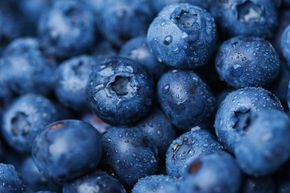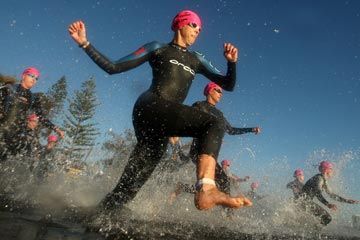For the most hardcore triathletes out there, the classic demonstration of endurance is the Ironman. At 140.6 miles, it's an incredible test of your body's limits. The individual leg-lengths are as follows:
- a 3.9-kilometer swim (2.4 miles)
- a 180-kilometer bike ride (112 miles)
- a 42-kilometer run (26.2 miles)
In addition to biking for more than 100 miles and swimming nearly two and a half, you're running an entire marathon. To the uninitiated triathlete, it might seem impossible. But with the right training and dedication, even this incredible feat is within your reach.
The nutrition tips for swimming and cycling also hold true for a marathon-length race. You'll need to help yourself out during the increased distances of all the events, so be prepared to refuel on the go and during transitions.
Just as important as observing proper nutrition before and during the event is helping your body recover afterward. No matter how in shape you are, competing in an Ironman triathlon is going to leave you essentially running on empty. Between 15 and 30 minutes after you've completed the race, you should start replacing the fluids your body lost. This means 20 to 24 ounces of fluid for each pound lost during the race. You'll also need to replace sodium -- about 450 milligrams of sodium per 24 ounces of fluid. Make sure you don't guzzle your fluids. Reclaim that hydration at a slow and steady pace. Avoid caffeine and alcohol, since they'll make dehydration worse. You'll also want to take in about 50 to 75 grams of carbohydrates and 6 to 20 grams of protein within 15 to 30 minutes after the finish, and repeat that every two hours. This will help stabilize your blood sugar and repair your muscles. If you're feeling nauseous, stick with liquids at first, and then start in on small bites of solid food once your stomach settles [source: Ironman.com].
Ready to take the plunge? See the next page for lots more information about staying healthy while training for a triathlon.





